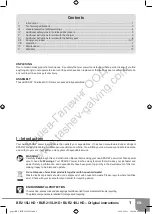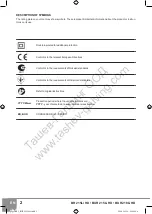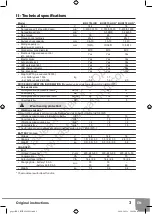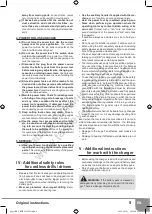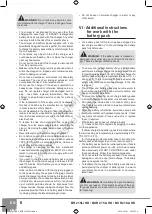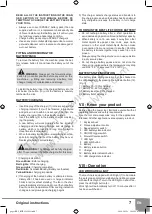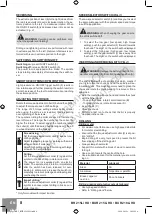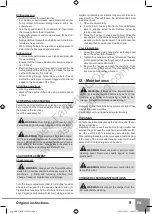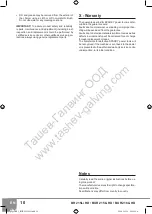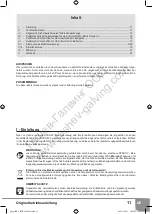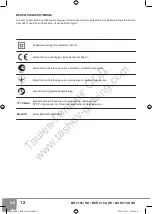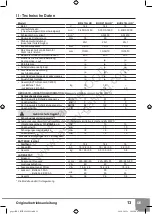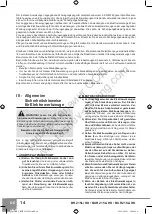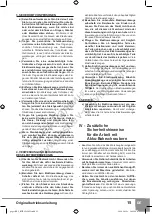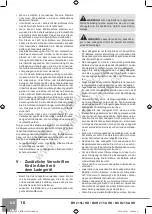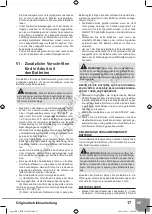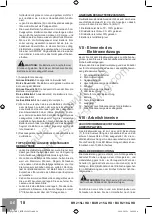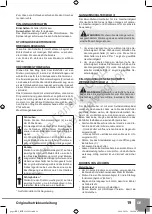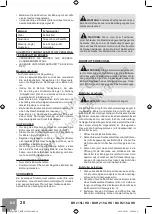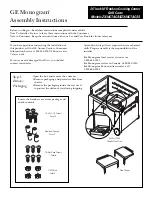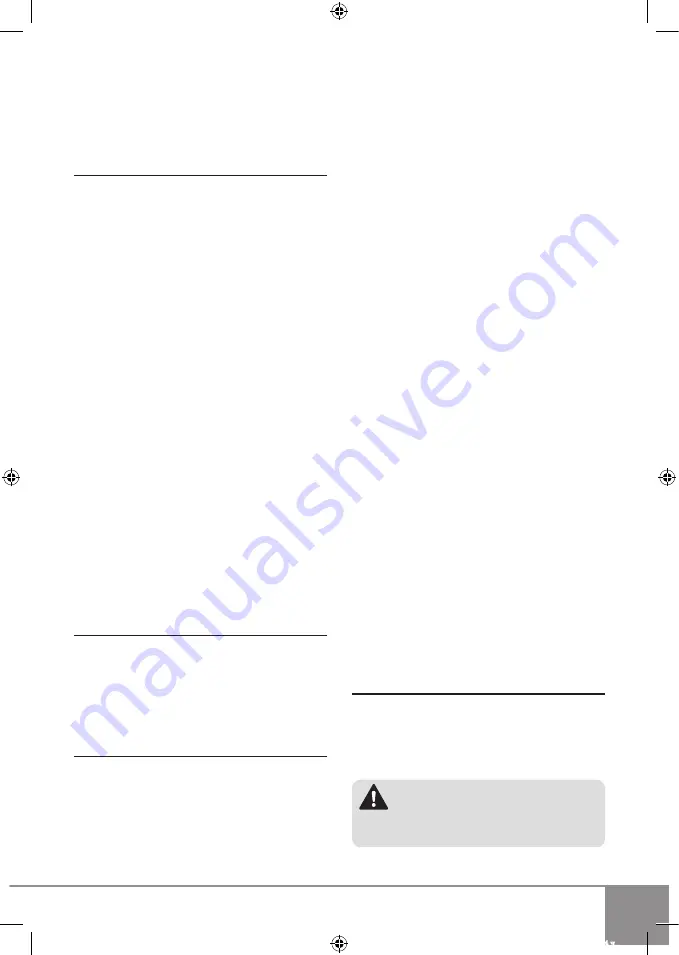
5
Original instructions
EN
away from moving parts.
Loose clothes, jewel-
lery or long hair can be caught in moving parts.
g) If devices are provided for the connection of
dust extraction and collection facilities, en
-
sure these are connected and properly used.
Use of dust collection can reduce dust-related haz-
ards.
4. POWER TOOL USE AND CARE
a) Do not force the power tool. Use the correct
power tool for your application.
The correct
power tool will do the job better and safer at the
rate for which it was designed.
b) Do not use the power tool if the switch does
not turn it on and off.
Any power tool that can-
not be controlled with the switch is dangerous and
must be repaired.
c) Disconnect the plug from the power source
and/or the battery pack from the power tool
before making any adjustments, changing ac
-
cessories, or storing power tools.
Such preven-
tive safety measures reduce the risk of starting the
power tool accidentally.
d) Store idle power tools out of the reach of chil
-
dren and do not allow persons unfamiliar with
the power tool or these instructions to operate
the power tool.
Power tools are dangerous in the
hands of untrained users.
e) Maintain power tools. Check for misalignment
or binding of moving parts, breakage of parts
and any other condition that may affect the
power tool’s operation. If damaged, have the
power tool repaired before use.
Many accidents
are caused by poorly maintained power tools.
f) Keep cutting tools sharp and clean.
Properly
maintained cutting tools with sharp cutting edges
are less likely to bind and are easier to control.
g) Use the power tool, accessories and tool bits
etc. in accordance with these instructions, tak
-
ing into account the working conditions and
the work to be performed.
Use of the power tool
for operations different from those intended could
result in a hazardous situation.
5. SERVICE
a) Have your power tool serviced by a qualified
repair person using only identical replacement
parts.
This will ensure that the safety of the power
tool is maintained.
IV - Additional safety rules
for cordless drills / drivers
▪
Be aware that this tool is always in an operating condi-
tion, because it does not have to be plugged into an
electrical outlet. Always set the trigger switch to the
locked OFF position when installing or removing the
battery pack.
▪
Wear ear protectors when impact drilling
.
Expo-
sure to noise can cause hearing loss.
▪
Use the auxiliary handle if supplied with the ma
-
chine.
Loss of control can cause personal injury.
▪
Hold the power tool by insulated gripping sur
-
faces when performing an operation where the
operating tool may contact hidden wiring or its
own cord.
Contact with a “live” wire will make ex-
posed metal parts of the power tool “live” and shock
the operator.
▪
If possible, always use clamps or a vice to hold your
work.
▪
Do not touch the bit after operation. It will be very hot.
▪
When using the drill, use safety equipment including
safety glasses and ear defenders. Wear a dust mask
if the drilling operation creates dust.
▪
The dust, separated while processing materials, con-
taining quartz (SiO
2
) is dangerous to your health. Do
not process materials containing asbestos.
▪
The tool must be used only for its prescribed purpose.
Any use other than those mentioned in this Manual
will be considered a case of misuse. The user and not
the manufacturer shall be liable for any damage or in-
jury resulting from such cases of misuse.
▪
To use this tool properly, you must observe the safety
regulations, the assembly instructions and the oper-
ating instructions to be found in this Manual. All per-
sons who use and service the machine have to be
acquainted with this Manual and must be informed
about its potential hazards. Children and frail people
must not use this tool. Children should be supervised
at all times if they are in the area in which the tool is
being used. It is also imperative that you observe the
accident prevention regulations in force in your area.
The same applies for general rules of occupational
health and safety.
▪
The manufacturer shall not be liable for any changes
made to the tool nor for any damage resulting from
such changes.
Even when the tool is used as prescribed it is not pos-
sible to eliminate all residual risk factors. The following
hazards may arise in connection with the tool’s construc-
tion and design:
▪
Damage to the lungs if an effective dust mask is not
worn.
▪
Damage to hearing if effective ear defenders are not
worn.
V - Additional instructions
for work with the charger
▪
Before using the charger, read all the instructions and
cautionary markings on the charger and battery pack
as well as the instructions on using the battery pack.
▪
Only charge your batteries indoors as the charger is
designed for indoor use only.
WARNING:
If the battery pack is cracked or
damaged in any other way, do not insert it in the char-
ger. There is a danger of electric shock.
pages BR2_BUR2Li-2012.indd 5
30.10.2012 г. 16:13:24 ч.
Та
ше
в
-
Га
лв
ин
г
ОО
Д
www.tashev-galving.com



